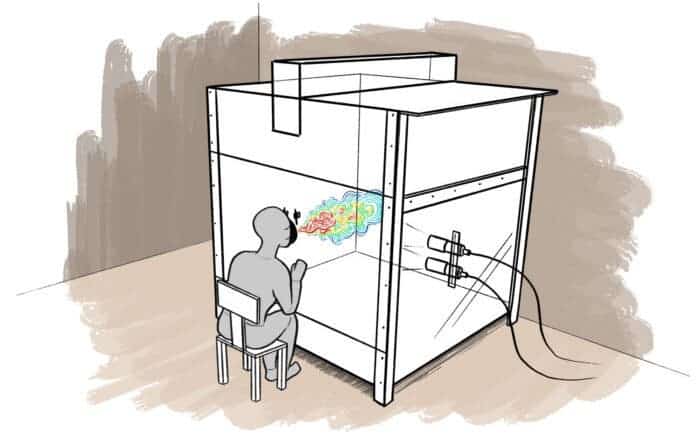Two meters, or six feet. That’s the advised social distancing to avoid a further spread of the coronavirus outbreak. But it might not be enough.

Mechanical and Materials Engineering professor Eric Savory partnered up with virologists at Sunnybrook Hospital to explore how environmental conditions affect the physical transmission of the infection, specifically looking at coughs by people infected with influenza.
“If you’re a couple meters away from someone who coughs unobstructively, then within about three seconds or so, their cough has reached you—and is still moving,” Savory explained. “Even when you’re two-and-a-half meters away, the airflow in the cough can still be moving at 200mm a second.”
The study showed that up to 10% of the fine droplets from a cough remain suspended in the air even after four seconds. This reaffirmed the importance of using the elbows and not the hands when sneezing or coughing, as suggested by many health agencies amid the coronavirus outbreak.
As the research was focused on seasonal influenza, Savory and his team are now transitioning the findings to COVID-19 and see if they can be replicated. They will look at the pathways of COVID-19 droplets through the air and analyze different material surfaces in order to verify its survivability under different conditions.
For Savory, the main question will be to realize the required dosage needed to cause an infection. “It’s going depend on the droplet size, as well as the viral content of those droplets. Clearly, the further away you are from someone the less likely you are to be infected, should they cough or sneeze,” he said.
Two years ago, Savory manufactured a “cough chamber” in which he carried out up to 77 experiments with 58 different people. The chamber had an enclosed cube with a hole and chin rest in one end, where participants coughed. Savory used high-speed cameras and laser light to establish the speed of the expelled particles.

At peak velocity, the speed was 1.2 meters per second, Savory found out.
“There is no real logical reason for saying that two meters are somehow safe, but it’s much better than one meter or closer. We’re not saying you’re going to get infected; we’re just saying there is a risk there. Obviously, it decreases the further you are away,” he said.
Social distancing recommendations vary according to the agency. The World Health Organization advises keeping at least 1 meter between you and anyone coughing and sneezing. Meanwhile, the UK’s National Health Service recommends people with symptoms stay at least 2 meters away from others.
The study was published in the journal Canadian Society for Mechanical Engineering.









